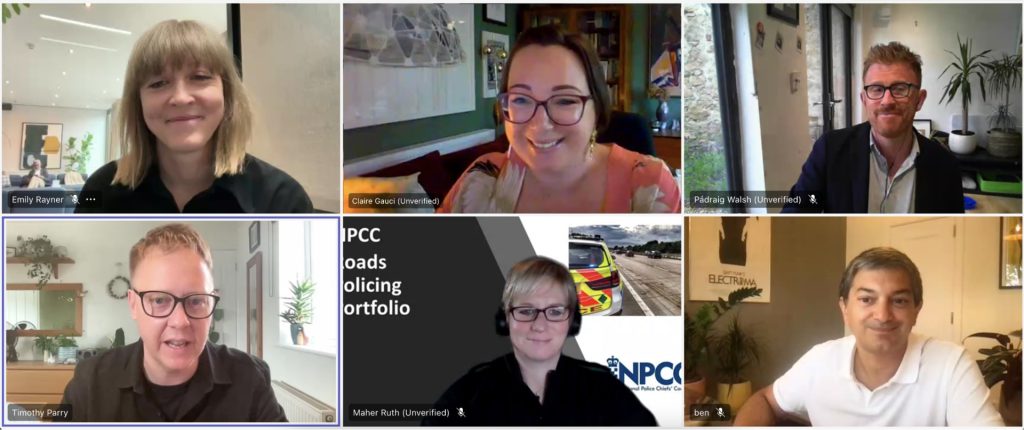Behaviour change briefing webinar: Stop Saying Stop – New Approaches To Safety Campaigning

A big thanks to all our speakers at our latest webinar, which focused on exploring new approaches to safety campaigning, with discussions on motorcycle and water safety initiatives. Our expert speakers emphasised the importance of behaviour change over traditional shock tactics, informed by insights from behavioural science.
Claremont’s Director Tim Parry set the stage by outlining the webinar’s focus on innovative safety campaigns and interventions. He provided an overview of the history and effectiveness of traditional safety campaigns, showing the shift towards behaviour change strategies. He highlighted the need to move away from shock and shame tactics, which are often less effective in creating long-term behavioural change.
Ruth Mayer, DI & Portfolio Officer at The National Police Chiefs Council, and Claremont Founder Ben Caspersz took the floor to discuss the Project Apex motorcycle safety initiative. Ben detailed the creative development of the Ridecraft campaign, aimed at leisure riders and superbike fans. He explained the discovery process, the testing of creative approaches, and the structure and visual elements of the campaign. Initial feedback from the pilot phase showed promising results.
Next, Claire Gauci, Public Safety Campaigns Manager at the Canal and River Trust, and Claremont Senior Consultant Emily Rayner presented a campaign on water safety with Canal River Trust. Claire outlined the importance of water safety and the specific challenges faced with teenagers, and Emily explained the research methodology and insights from behavioural psychology, focusing on a co-design process with young people in Wigan. She presented the final campaign approach and its creative elements, as Claire discussed the next steps and internal testing of their toolkit.
Behavioural Psychologist Padraig Walsh reflected on the behavioural science underpinning these campaigns. He discussed the three waves of behavioural science and their influence on behaviour change, stressing the importance of understanding the target audience’s values and motivations. Padraig advocated for a values-based approach to designing effective behaviour change campaigns.
Finally, the webinar concluded with a Q&A session where Tim and the speakers addressed audience questions. The discussion revolved around the effectiveness of shock tactics versus empowerment-based approaches, the significance of co-design and testing with target audiences, and the challenges of measuring the impact of behaviour change campaigns.
Many thanks to all who came. We’ve uploaded a recording on YouTube for anyone who’d like to watch (or re-watch).
